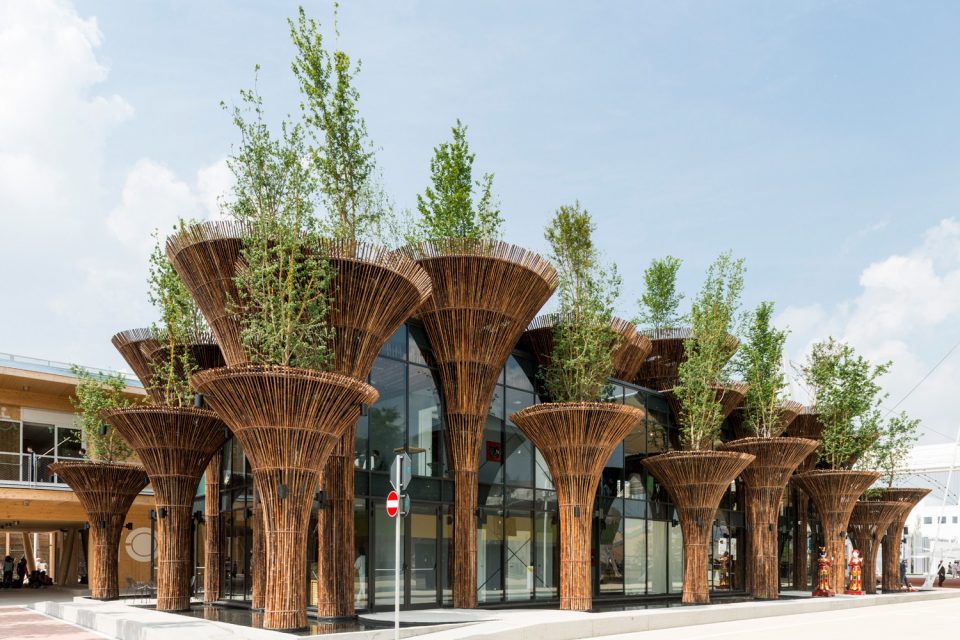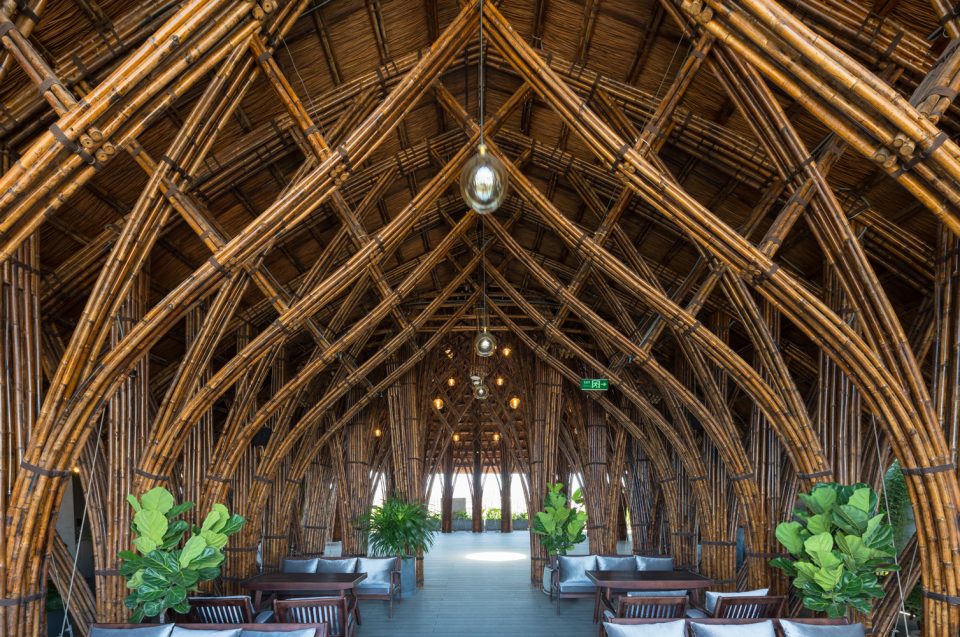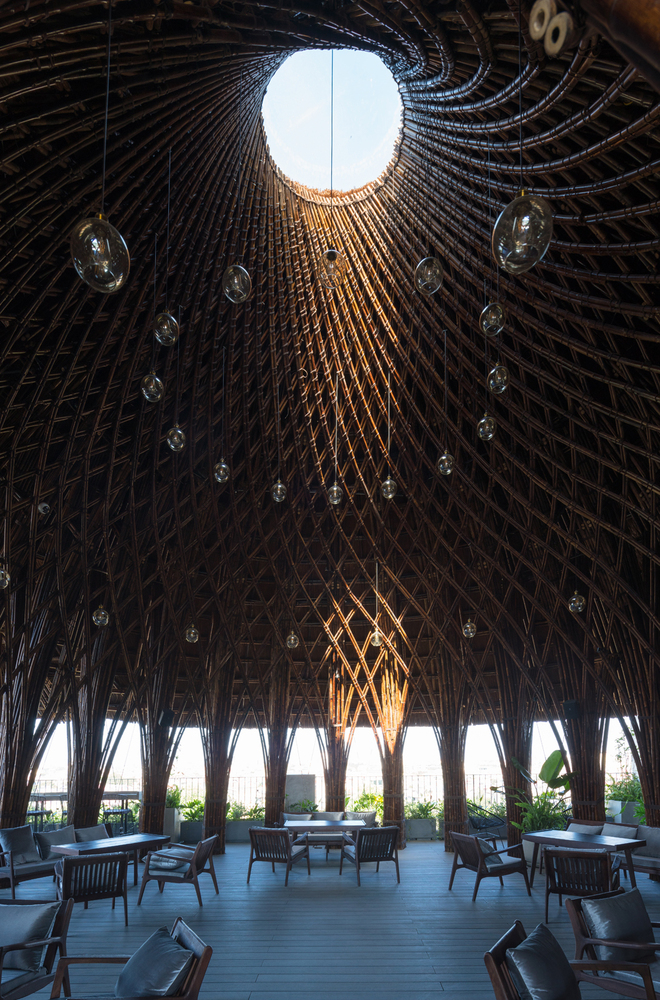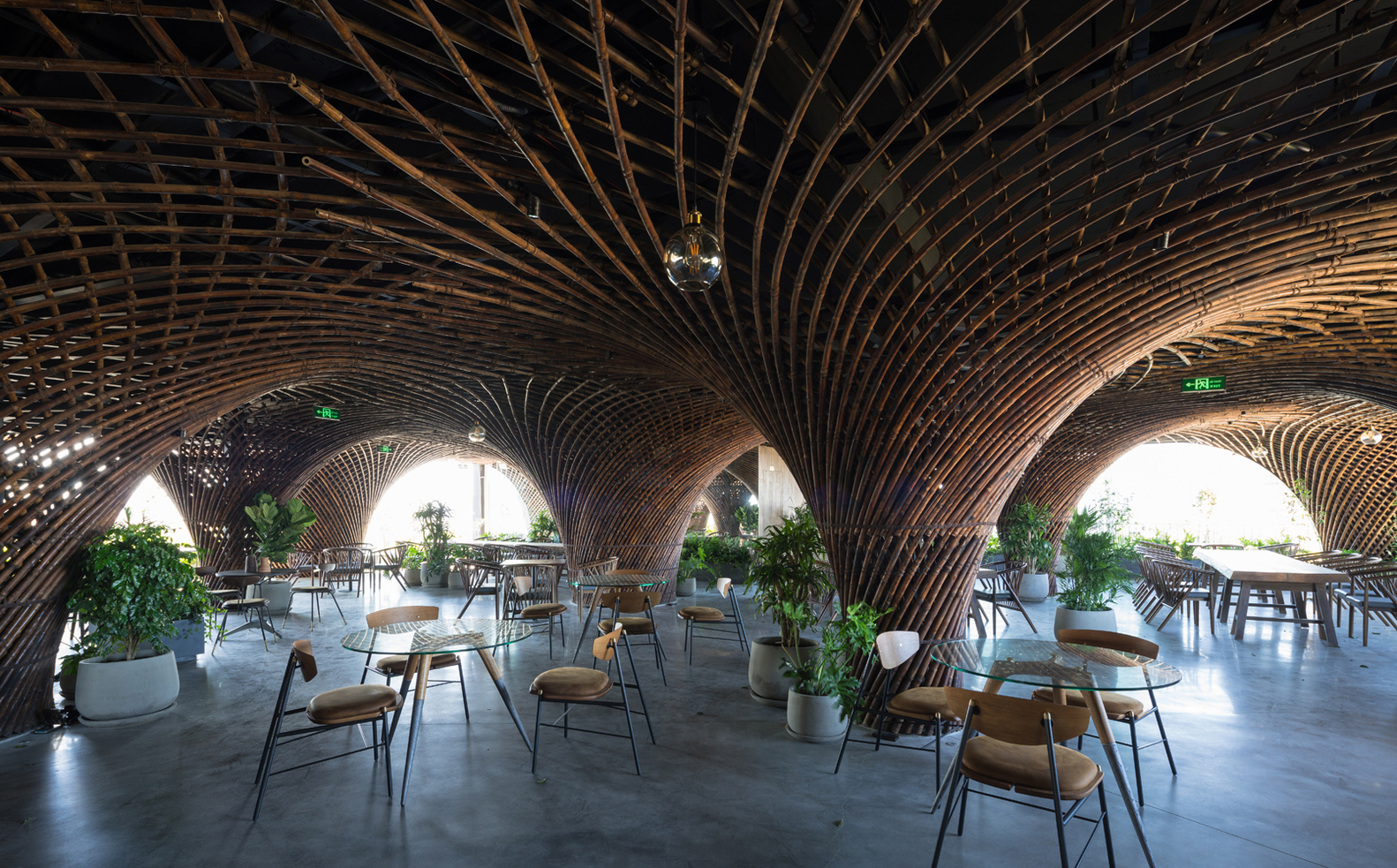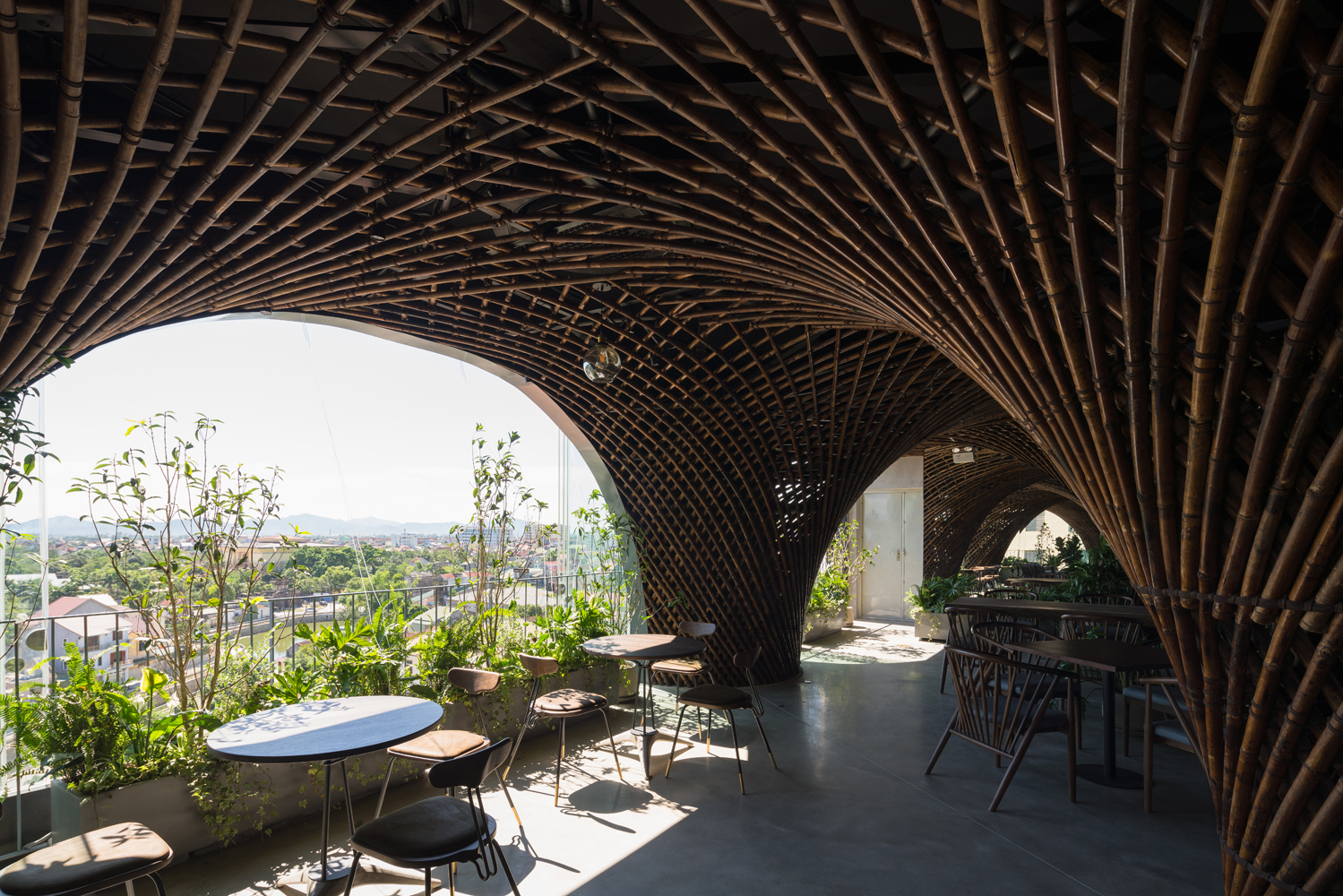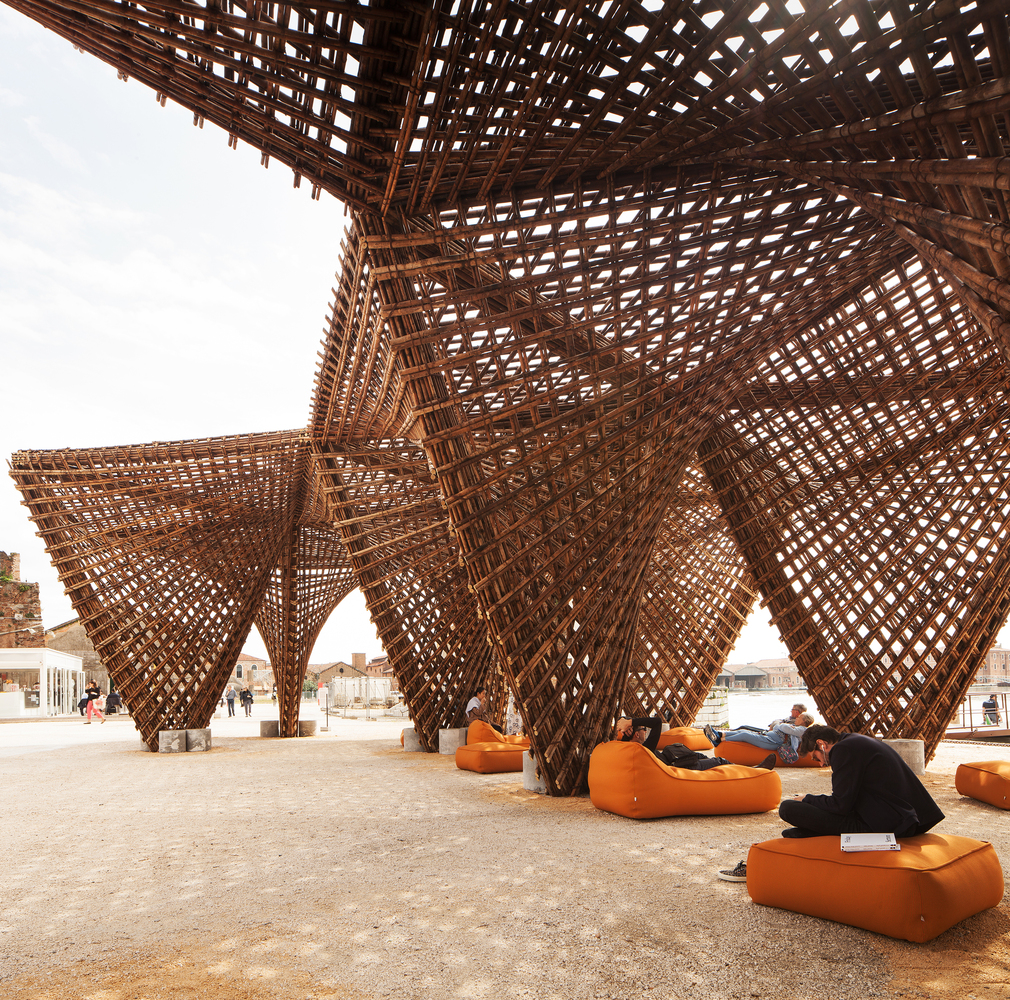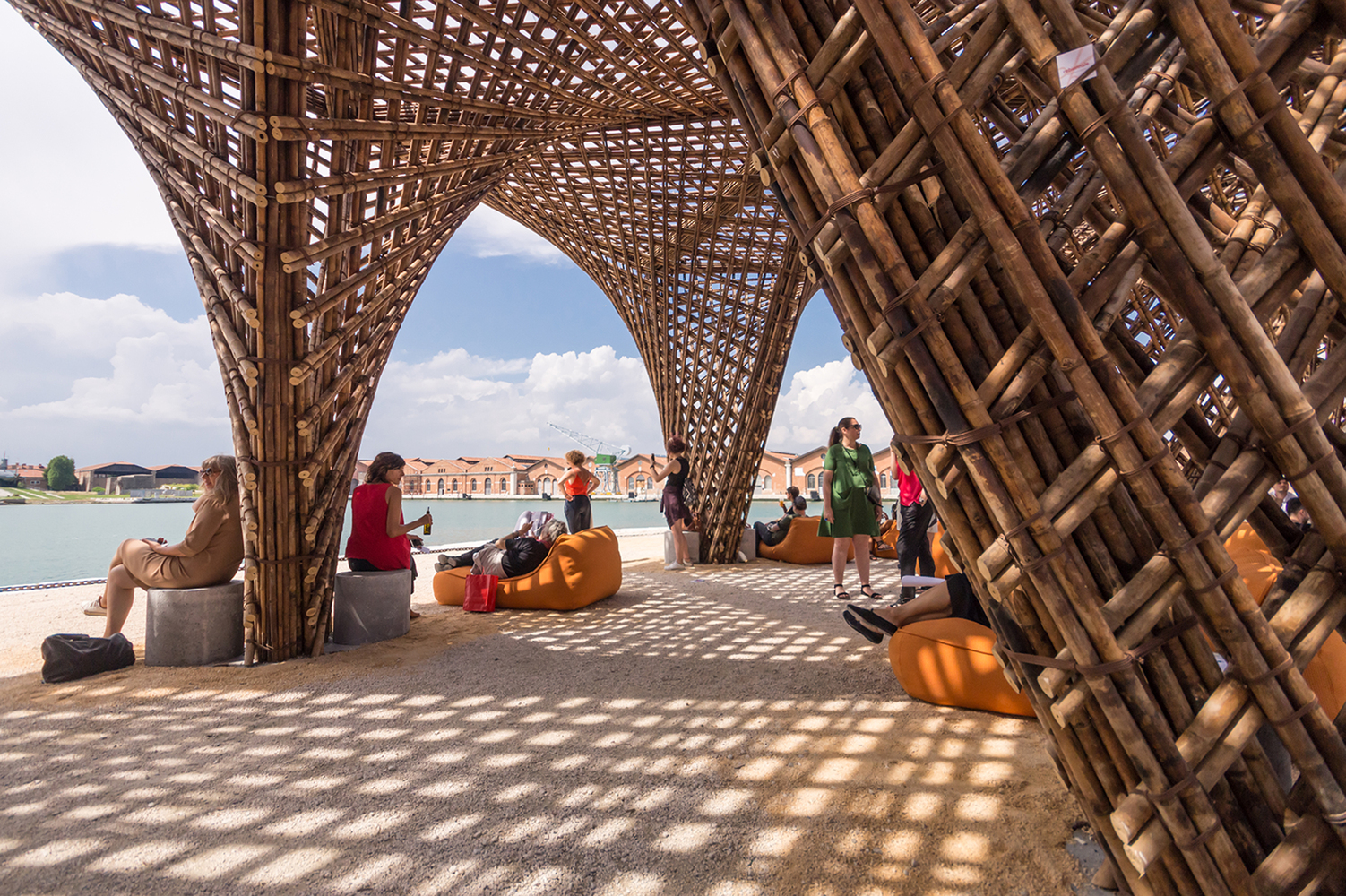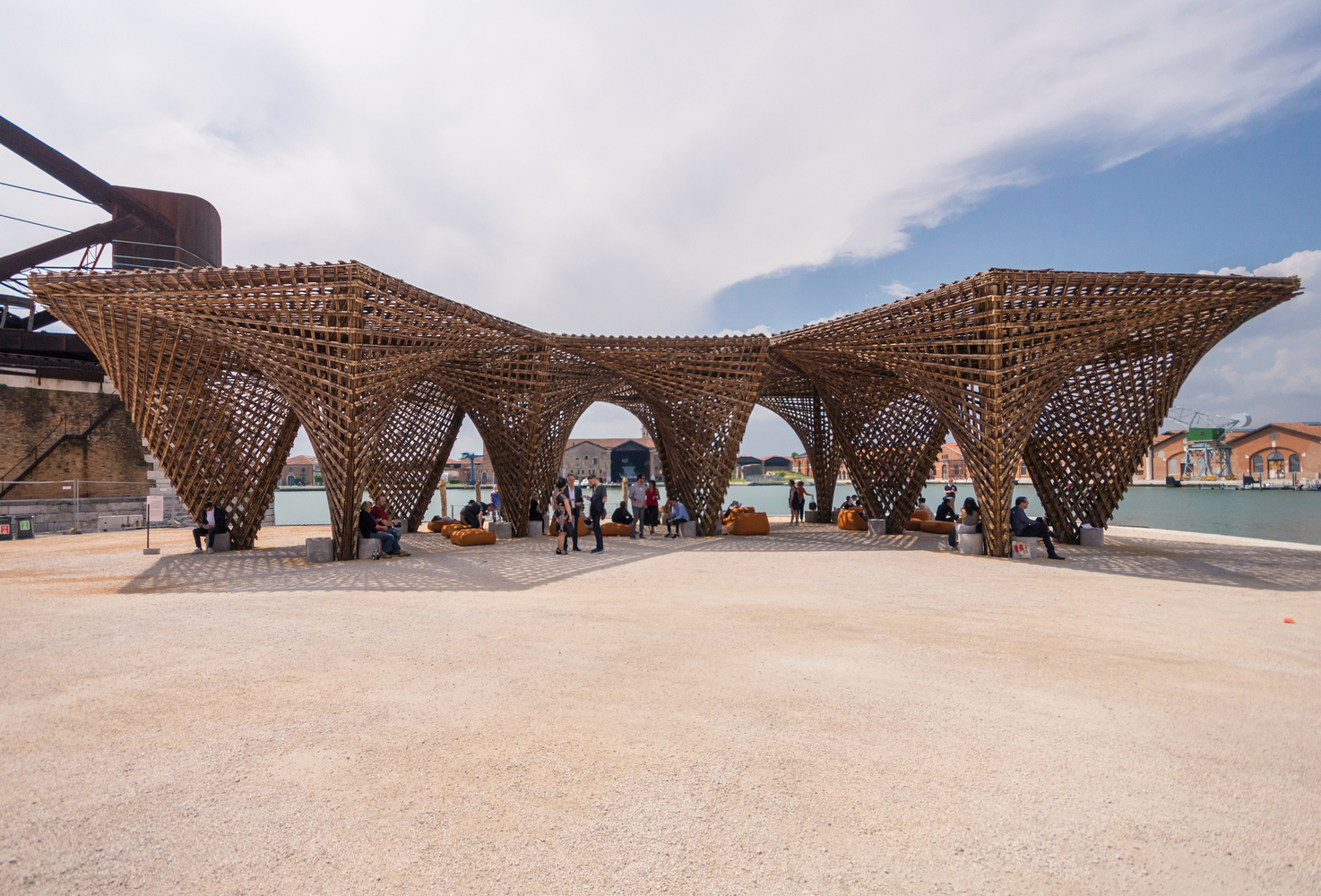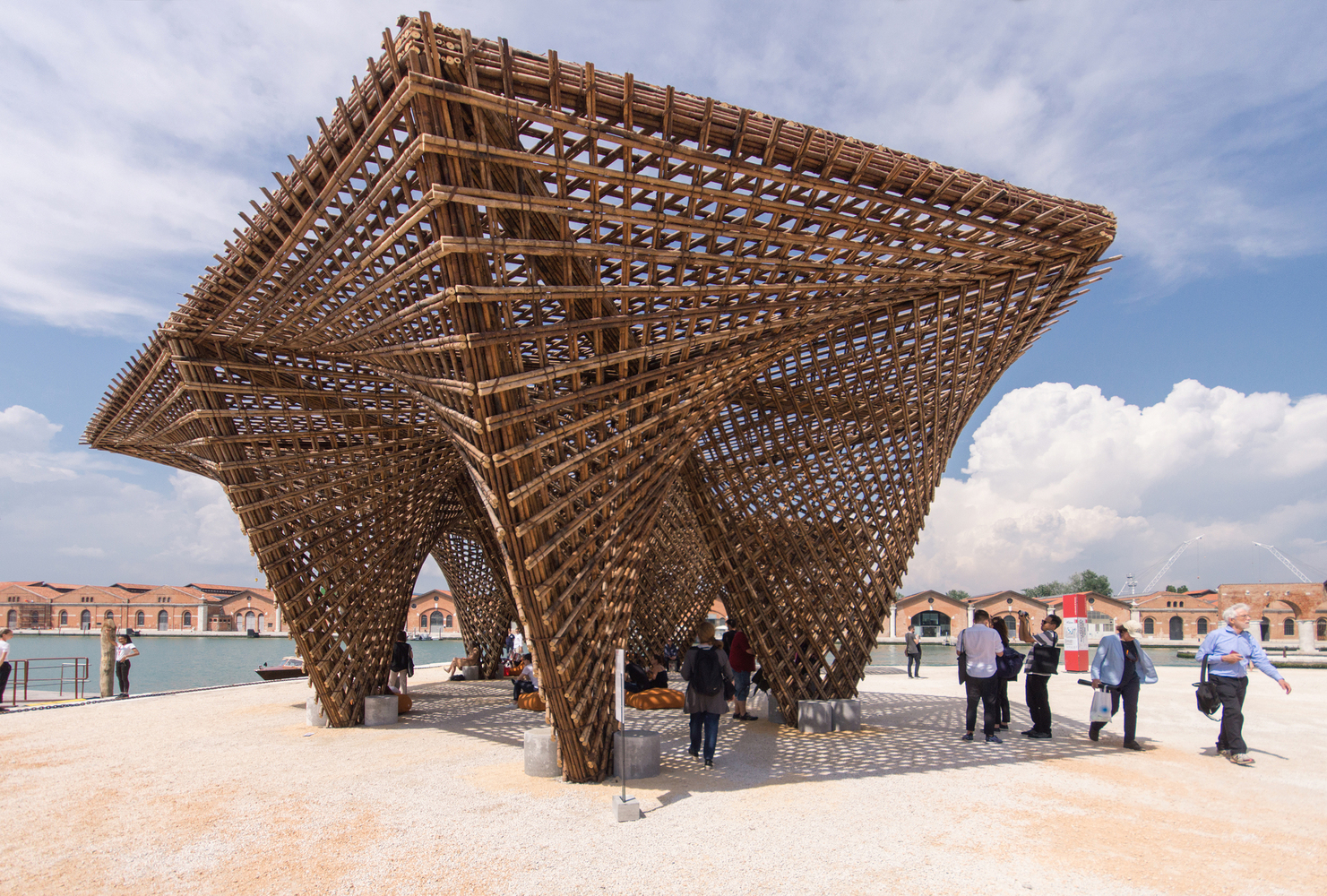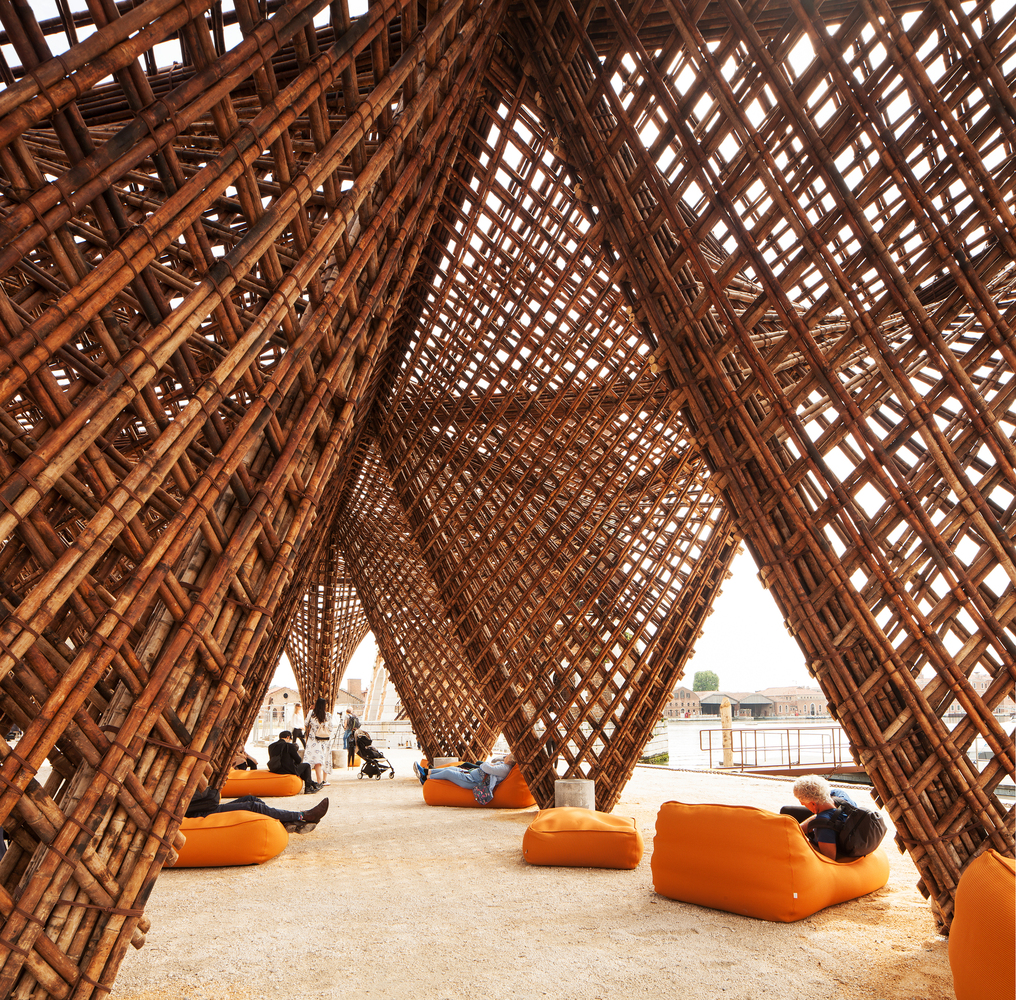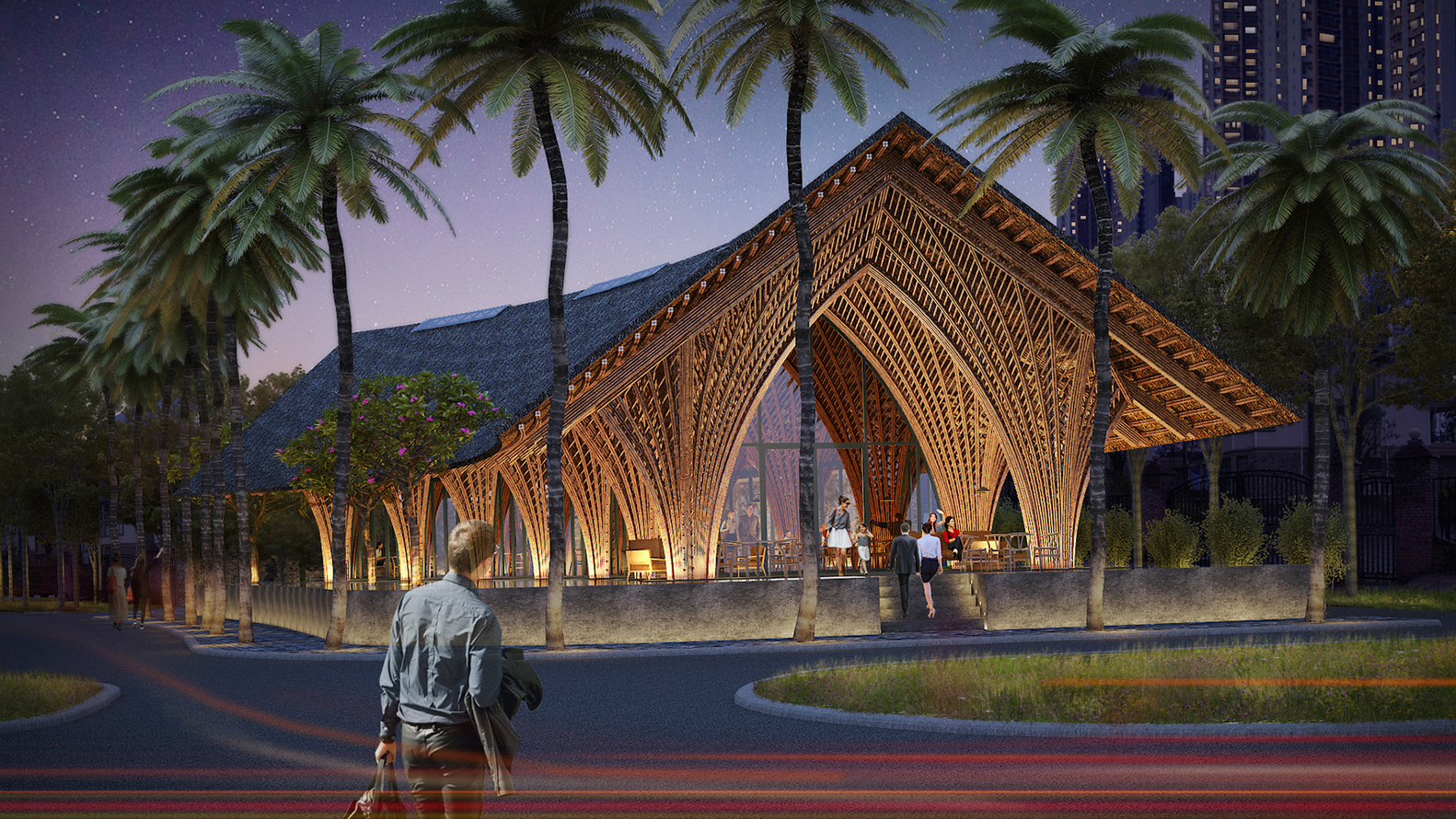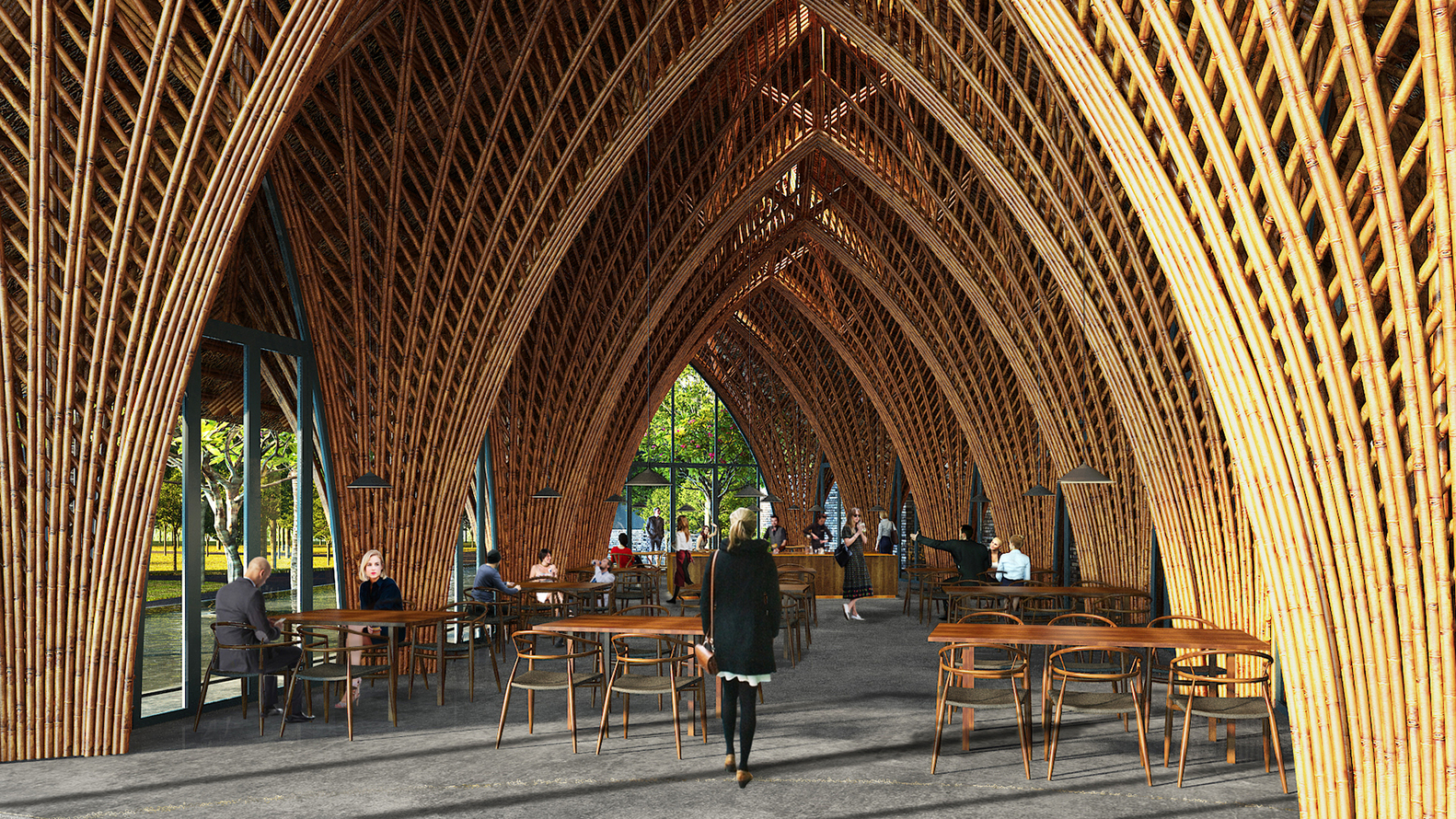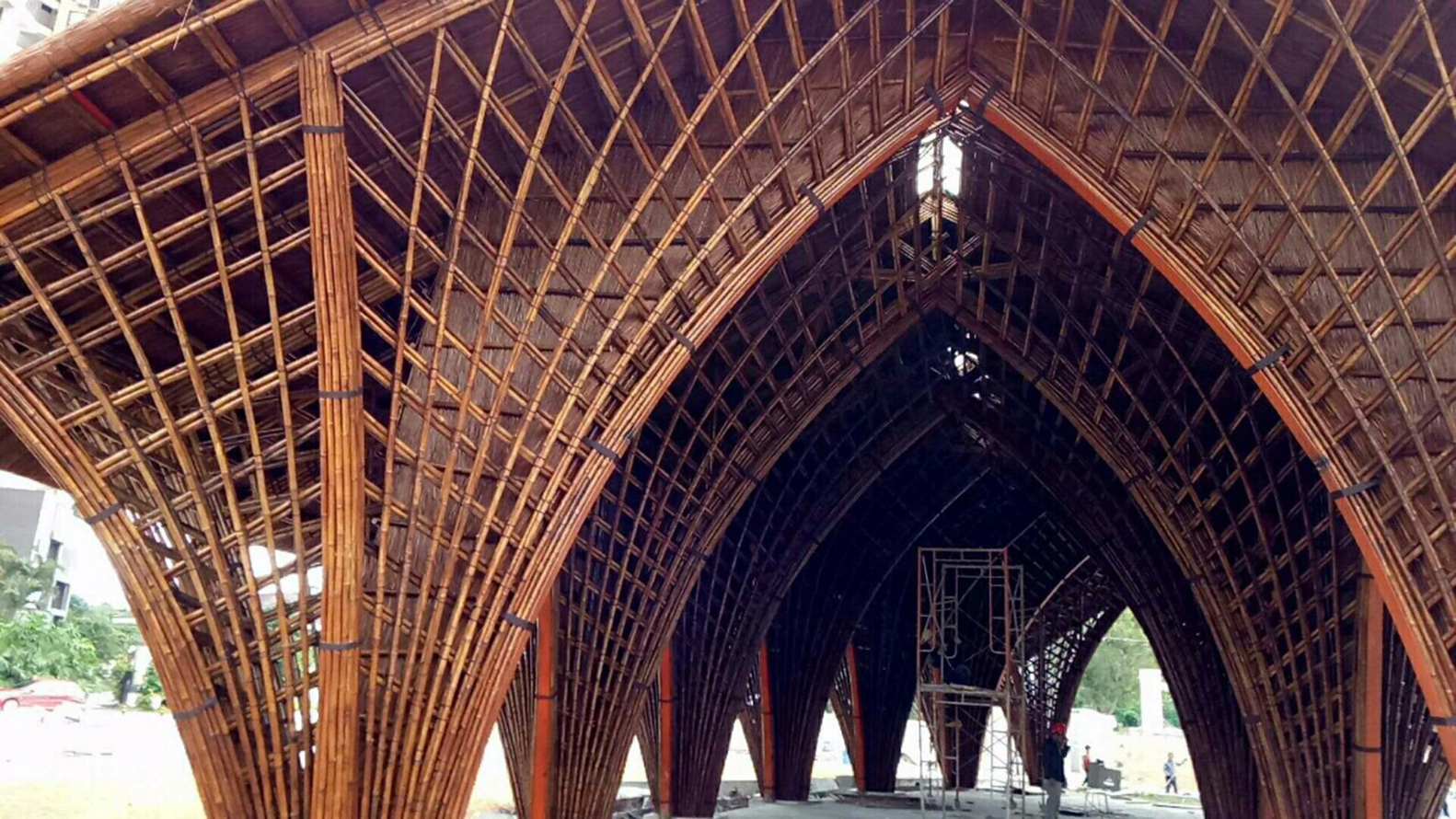In countries like Vietnam and Thailand, bamboo is taking on more complex forms than ever before, playing an integral role in the future of modern sustainable architecture. One of the firms at the forefront of bamboo innovation is VTN Architects (formerly known as Vo Trong Nghia Architects), founded in 2006 with offices in Ho Chi Minh City and Hanoi and consisting of more than 60 international architects, engineers and staff.
“My village was located in the forest,” says founding partner Vo Trong Nghia. “I remember going to the forest and cutting down trees to sell timber. We destroyed that forest when I was in secondary school. By the time I was about 20 years old, the entire forest in that area was destroyed by the village. It got me thinking about how to protect timber. Other architects tend to use a lot of timber, but I try to use bamboo instead, because it’s more sustainable.”
“The hard wood, like that in our area, takes a long, long time to grow back. But with bamboo, it grows quickly, it is strong, and it’s attractive, too. Using bamboo relieves pressure on the forest. We can use this in restaurants, hotels, homes – it can be used for everything.”
Projects like the firm’s incredible Nocenco Cafe, which transformed the rooftop of a 7-story building in Vinh, epitomize the architect’s vision. An open air club and lounge completed in 2018, the structure uses bamboo like trusses in a Gothic cathedral to form a beautiful dome overhead. The space feels sheltered and protected from the hot sun, but still grants incredible views of the city.
VTN debuted ‘Bamboo Stalactite’ at this year’s Biennale di Venezia. Set along a canal in Venice, the installation is envisioned as a “free space,” shared equally by everyone and open to all for no charge. “Bamboo, with its distinctive flexibility structurally speaking, allows us to realize this project with limited resources (8 Vietnamese workers, with the support of Vietnamese and Italian architects and students to build the pavilion within 25 days.)”
“This flexibility extends beyond structures. Bamboo helps to create a space, rich in its connection with the beauty of nature, with the sun, the wind and the sea. For that reason, this bamboo space easily becomes the city’s landmark despite its small size.”
Still under construction, the firm’s ‘Ting Xi Bamboo Pavilion’ in Xiamen, China further expands upon this idea. 14 fanning bamboo columns support a slightly concave gabled roof. Dining tables are set within this cavernous space, while functions like the kitchen, restrooms, staff room and storage are housed within a triangular brick building in the back.
